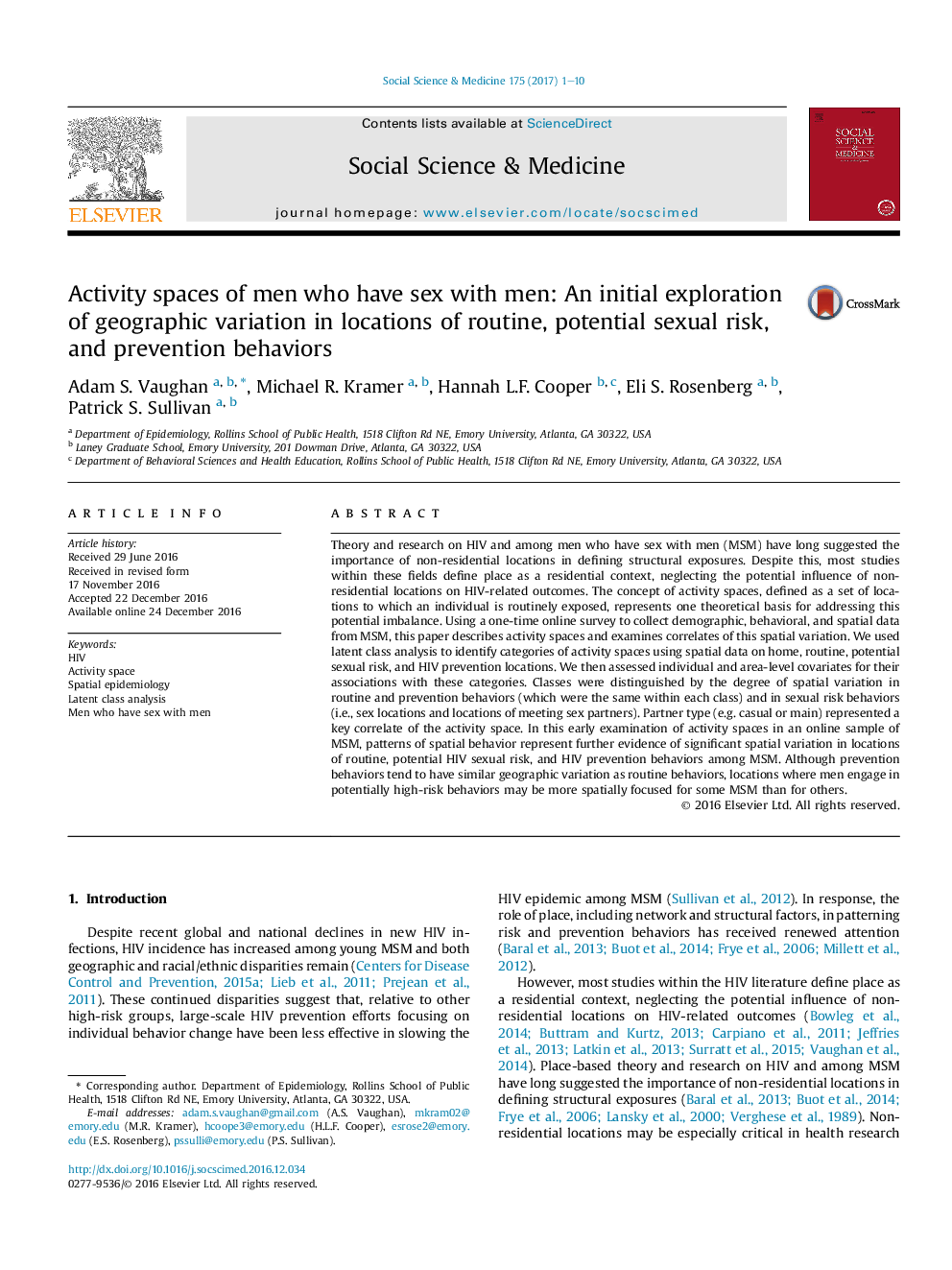| کد مقاله | کد نشریه | سال انتشار | مقاله انگلیسی | نسخه تمام متن |
|---|---|---|---|---|
| 5046676 | 1475994 | 2017 | 10 صفحه PDF | دانلود رایگان |
- 84% of activity spaces were defined by locations outside the home census tract.
- Prevention behaviors generally spatially overlap routine behaviors.
- Potential sexual risk behaviors may be spatially segregated.
- Findings suggest importance of considering context of non-residential locations.
Theory and research on HIV and among men who have sex with men (MSM) have long suggested the importance of non-residential locations in defining structural exposures. Despite this, most studies within these fields define place as a residential context, neglecting the potential influence of non-residential locations on HIV-related outcomes. The concept of activity spaces, defined as a set of locations to which an individual is routinely exposed, represents one theoretical basis for addressing this potential imbalance. Using a one-time online survey to collect demographic, behavioral, and spatial data from MSM, this paper describes activity spaces and examines correlates of this spatial variation. We used latent class analysis to identify categories of activity spaces using spatial data on home, routine, potential sexual risk, and HIV prevention locations. We then assessed individual and area-level covariates for their associations with these categories. Classes were distinguished by the degree of spatial variation in routine and prevention behaviors (which were the same within each class) and in sexual risk behaviors (i.e., sex locations and locations of meeting sex partners). Partner type (e.g. casual or main) represented a key correlate of the activity space. In this early examination of activity spaces in an online sample of MSM, patterns of spatial behavior represent further evidence of significant spatial variation in locations of routine, potential HIV sexual risk, and HIV prevention behaviors among MSM. Although prevention behaviors tend to have similar geographic variation as routine behaviors, locations where men engage in potentially high-risk behaviors may be more spatially focused for some MSM than for others.
Journal: Social Science & Medicine - Volume 175, February 2017, Pages 1-10
